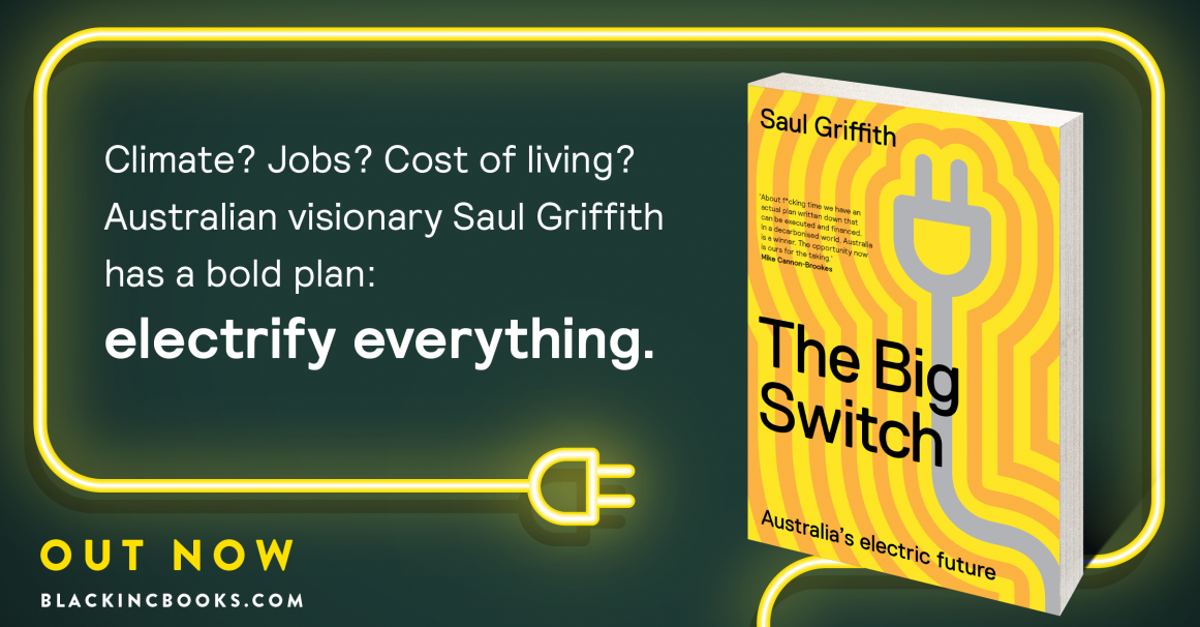Climate scientists continue to emphasise the need for bold action on global warming before 2030 if we’re going to avoid the most catastrophic impacts. Time is running out!
But what if reducing emissions could also save you money. Would that be enough of an incentive for people to act now? Tim Stafford, Head of Research at WBP Group, explains why electrifying every home in Australia will help get us to Net Zero greenhouse gas emissions and how doing so has saved his family thousands of dollars.
Tim Stafford, head of research at WBP Group, charging his electric car at home.
Continuing to burn fossil fuels to power your home is akin to a smoker who continues to puff on their cigarette after being diagnosed with lung cancer. I believe the majority of Australians are ready to give up their fossil fuel addiction. To do so, they just need a viable path.
Government estimates are that 18-20% of Australia’s total greenhouse gas emissions come from our homes. While burning coal for electricity is the main culprit, it’s worth highlighting that natural gas, used by homeowners for heating and cooking is just as harmful.
The good news is the solution is relatively straightforward, and we can implement it with existing technologies.
Our best path to reducing greenhouse gas emissions is to stop burning gas and electrify everything in our home. Then, we need to get serious about renewable energy. An all-electric home powered by renewables will be well on the way to achieving Net Zero emissions.
For most homeowners, going all-electric will mean;
- replacing their old gas hot water system with an electric heat pump
- replacing their gas heater with split system air-conditioners
- replacing their gas cooktop with electric induction
- replacing their petrol car with an electric one.
Saul Griffiths has advised US president Joe Biden on climate policy and is the author of a new book, The Big Switch, Australia’s electric future. In an October 2021 ABC News article, he estimated that by 2030, homeowners who’ve gone all-electric would be saving up to $6,000 per year.
You’re probably asking, are these savings realistic, or are they just pie in the sky?
At the end of 2020, my wife and I committed to electrifying our inner-city Melbourne home. We installed a 10.4kW rooftop solar system and an electric car charging station. We also purchased an electric car.
Since its installation, our oversized solar system has generated more than enough electricity to power our home and continually top up the battery on our car. We’ve produced so much electricity that our annual bill is in credit.
Range anxiety is a common obstacle to purchasing an electric car, so my wife and I were cautious initially. However, after driving the car for 12 months, I can report that we’ve not dramatically changed our driving habits. In particular, I’ve been able to comfortably drive my car to work every day.
Over the last 12 months, we’ve driven more than 13,000km and have only paid to recharge the battery once when we travelled from Melbourne to the Bellarine Peninsula (it cost us $3.50). Given the amount of energy our solar panels have generated, we potentially could have driven over 100,000km without paying a cent (based on the car’s reported range of 350km when fully charged).
The downside to living in Melbourne is that our solar panels were not as productive during winter. So, there has been a handful of occasions where I’ve had to take advantage of the free charging offered by my local council to top-up the car’s battery.
Twelve months into our all-electric journey, I estimate our savings to be approximately $4,000.
- Fuel savings – $2,000 to $2,500 based on expense records I keep for work
- Electricity savings – $1,290 based on Victoria’s average annual electricity bill
- $340 credit from our electricity provider – our energy provider has paid us for the excess power we’ve generated
Our next step will be to replace our old gas ducted heating with split system air-conditioners. Then, once our gas boosted solar hot water system reaches the end of its effective life, we’ll replace it with an electric heat pump and replace our gas cooktop with an electric induction one.
With our gas bill totalling $1,200 over the last 12 months, we could potentially be saving more than $5,000 per year once our home is all-electric. As energy prices continue to increase and you consider forecasts that petrol will be well over $2.00/litre, you can see that annual savings of $6,000 by 2030 are more than realistic.
While the cost savings of going all-electric are undeniable, it’s important to acknowledge there are substantial upfront costs when you make the transition.
- Rooftop solar – $15,000 fully installed. However, with government grants and an interest-free loan from the Victorian state government, the upfront cost was only $7,390. Plus, a $1,850 interest-free loan from the Victorian state government to be paid off over the next four years.
- Zappi car charger – $2,000, fully installed.
- 2020 Hyundai Ionic electric car – $46,000 plus onroad costs.
House prices have been increasing quite dramatically for some time now. In just the last 12 months, prices have grown at the third-fastest rate in history. This substantial increase means many Australians have dramatically increased their home equity.
Having been one of the lucky homeowners to have reaped this benefit, my wife and I felt compelled to cover the upfront cost of going electric by tapping into our home equity which we did by refinancing our home loan.
As Australians, we are often guilty of burying our heads in the sand on the issue of climate change. We forget that as one of the wealthiest countries in the world, we are also one of the highest emitters on a per capita basis.
There will be many less fortunate Australians who won’t be able to afford the upfront cost of electrification, and I believe government have a responsibility to step in and provide assistance. But for those who’ve benefitted from a red-hot property market, it’s hard to find a justifiable reason why they can’t begin the process of electrification today, especially when you consider the substantial savings you’ll make in the long term.
As the father of two small children, I want to ensure they inhabit a planet free from the ravages of climate change. Will electrifying our home do anything to solve the problem? No it won’t, but therein lies the issue. No one person, business, or government can solve this problem by themselves. Collectively, we all need to take responsibility.
Yes, refinancing your home loan can be time consuming, and obtaining quotes and dealing with tradespeople can be frustrating. But can you really look your children in the eye and say these are legitimate obstacles not to start?
Remember, going electric is unlikely to require extensive modifications to your home. You simply remove the old inefficient appliance and replace it with a new one. An added incentive for us was the $4,000 cash bonus we received from the bank when we refinanced our home loan, which has gone a long way to covering our upfront costs. Given how competitive the home loan market is, these deals are still available.
We must break our addiction to fossil fuels, and we must do it urgently. So, I leave you with this question: Why can’t you start making your home all-electric today so you can be Net Zero by 2030?
If you would like to get more helpful valuation insights and property related news, follow WBP Group on LinkedIn.









